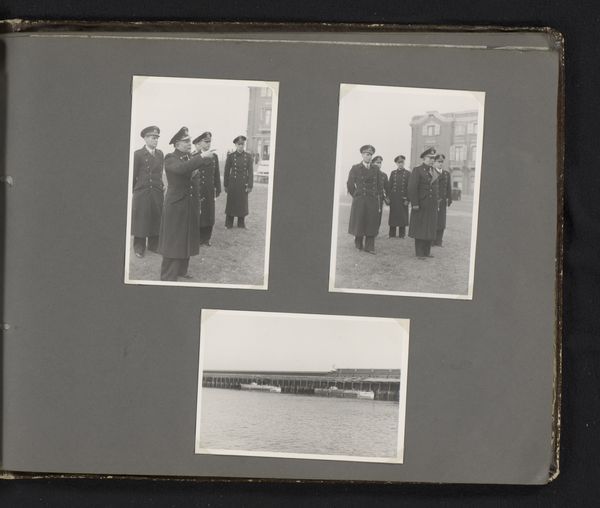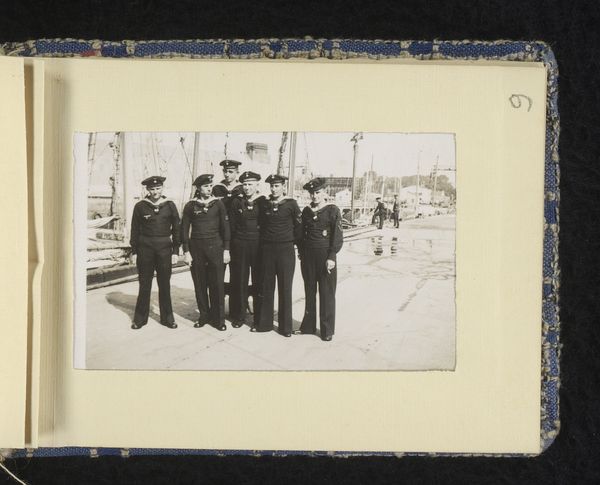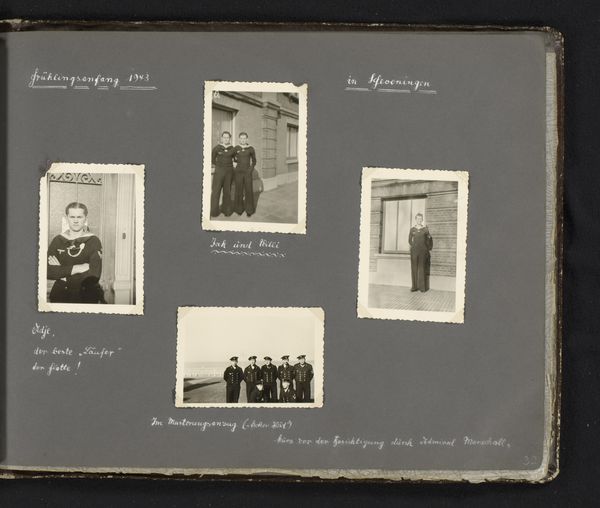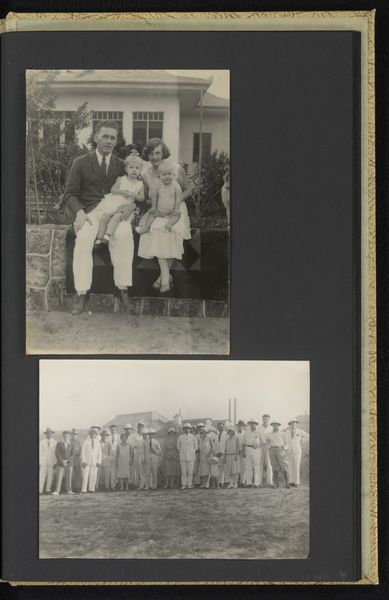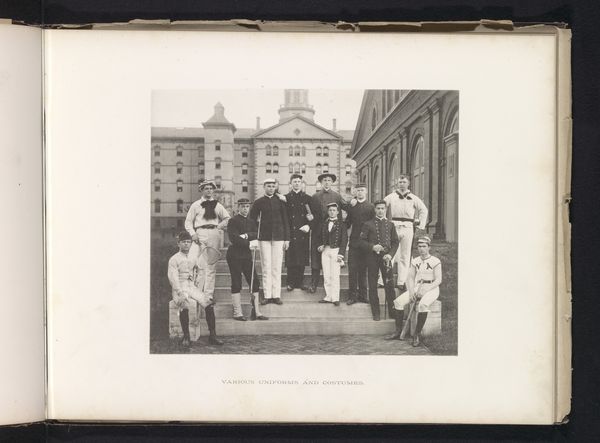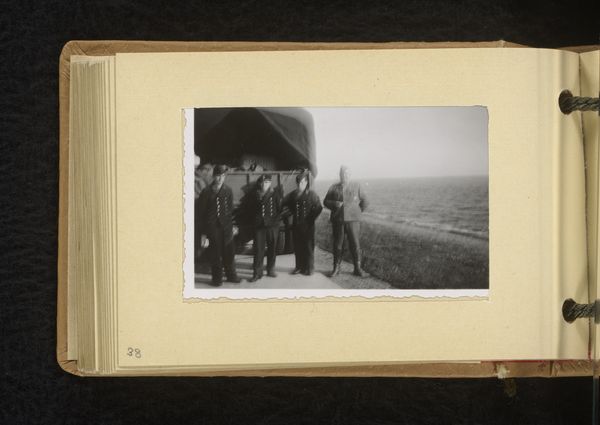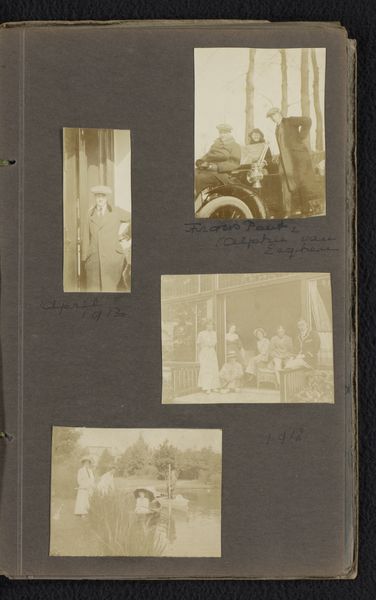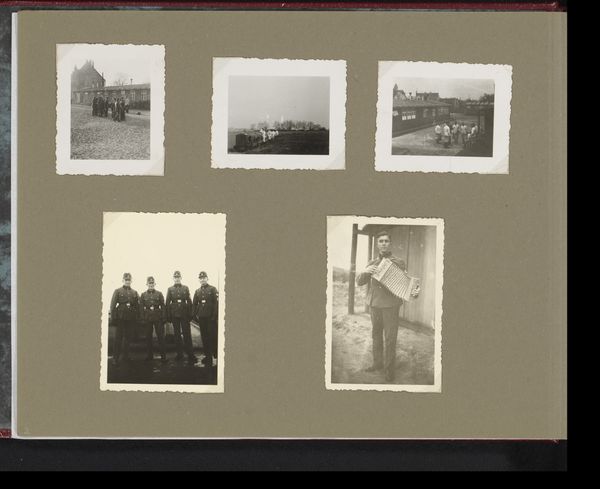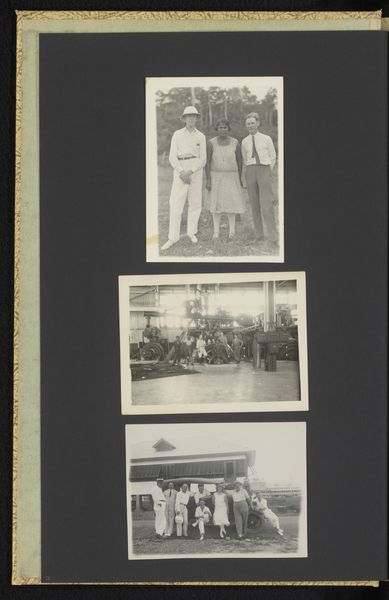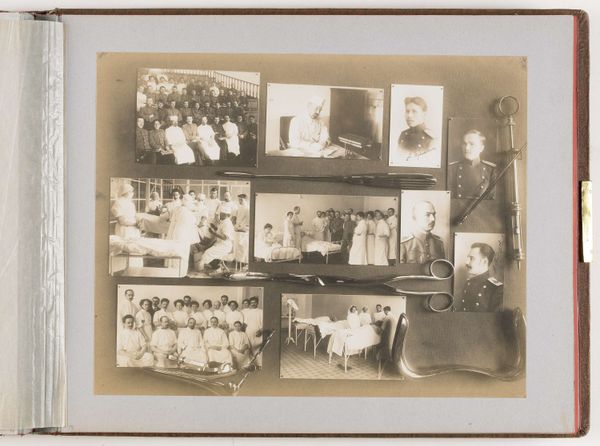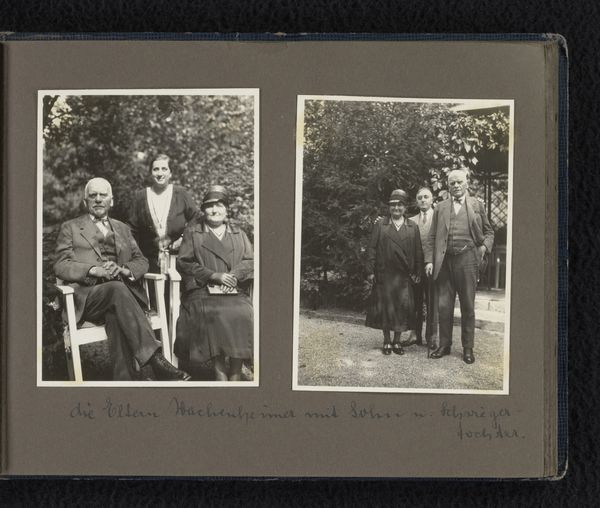
photography, photomontage, gelatin-silver-print
#
portrait
#
vintage
#
photography
#
historical photography
#
photomontage
#
gelatin-silver-print
#
history-painting
#
realism
Dimensions: height 60 mm, width 90 mm, height 85 mm, width 120 mm
Copyright: Rijks Museum: Open Domain
Editor: Here we have "Standing Military Men," a gelatin-silver print photomontage created sometime between 1940 and 1945 by an anonymous artist. It's a fairly straightforward black and white photo of uniformed men, and some men wearing what seem to be doctor's coats, all grouped together against what looks like a building exterior. There's an undeniable tension in such a composition, even to my eye. What can you tell me about this work? Curator: This image operates as a potent historical artifact, pushing us to consider the narratives embedded within its stark realism. The gelatin-silver print, a common medium of the era, belies the complex photomontage technique used here, complicating our understanding of authenticity and documentation, wouldn’t you say? Editor: Absolutely! It gives a manufactured feel that contrasts with the apparent historical nature of the image. Curator: Exactly. Note the positioning of the figures. How might their placement relative to one another and the building facade contribute to a power dynamic? Also, given the date, what does the visual juxtaposition of military personnel and those in what look like medical garments suggest about the social landscape during that period? Who is being served, and who is suffering, if anything can be gathered about the intersectionality of different actors from their placement in this photo? Editor: It definitely seems to point to an unsettling reliance of the institutions on each other, with a clinical detachment within the context of war. The setting seems cold somehow, almost sterile. Curator: Yes, the almost clinical aesthetic amplifies that feeling of institutionalized power and control. Do you think that art can provoke discussions on broader, intersecting systems of dominance and oppression through single visual cues, even within a carefully staged photograph? Editor: I hadn't thought about that aspect until now. Thinking about it makes the image much more complex and unsettling, but in an important way. It really encourages thinking beyond the surface! Curator: Precisely. Recognizing that photographs can actively perpetuate specific viewpoints as much as capture ‘reality’, is the beginning of that journey. It is important to question every historical artifact, every story. Editor: This has been a fantastic deeper dive. I'll never look at historical photography the same way again!
Comments
No comments
Be the first to comment and join the conversation on the ultimate creative platform.
